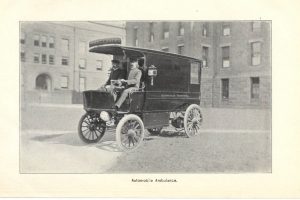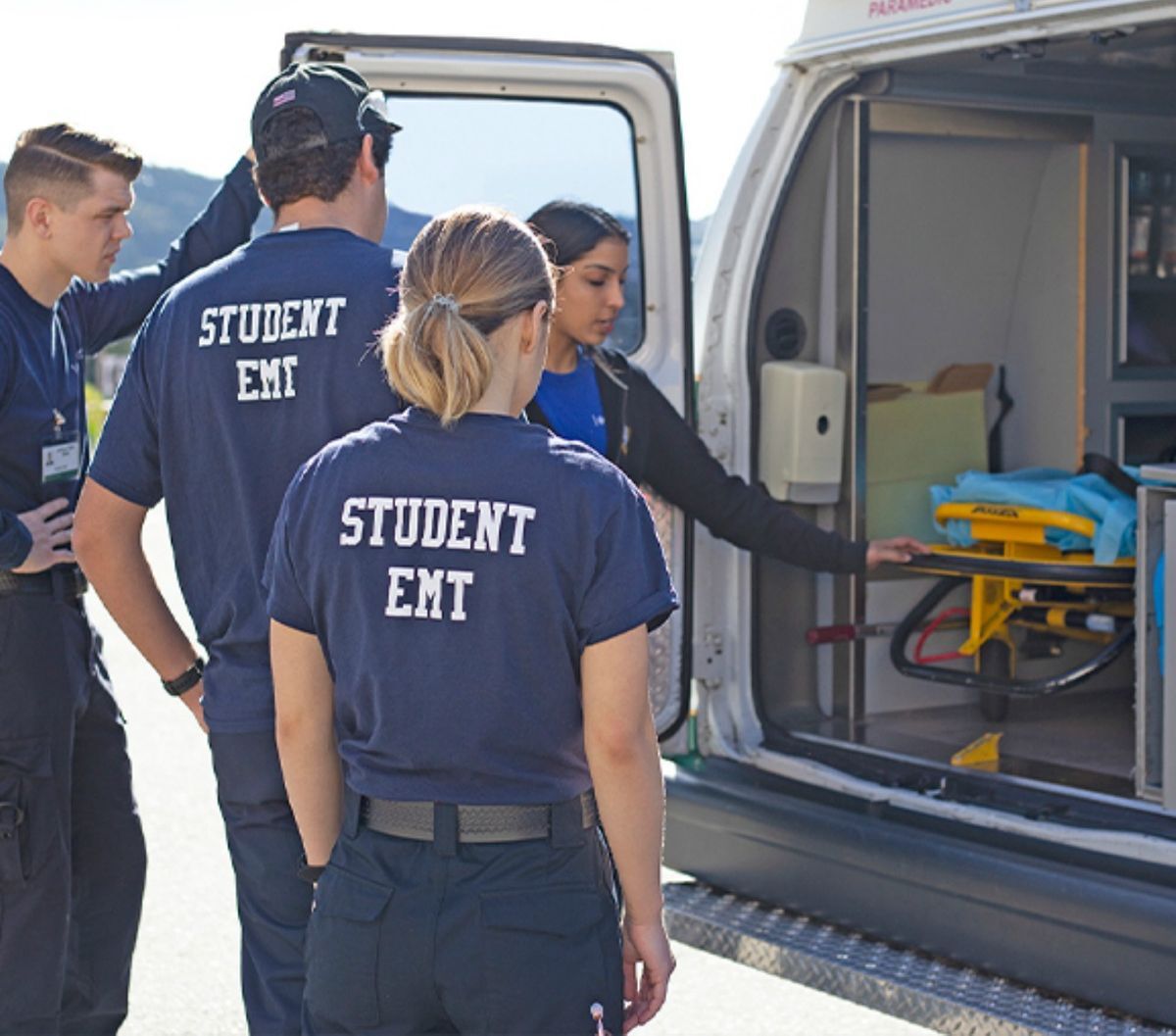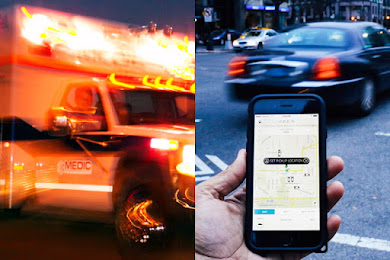Imagine you're a traveler in Ancient Judea. Perhaps you're making the sojourn from your native Jerusalem to Jericho to make your living, trading fine goods you can't afford for yourself. As you come around the corner of a small hill, out of nowhere comes a band of masked men.
"Lookie what we have here," one says. "Aren't you a little bit far from home?"
Before you have the chance to beg them for mercy, to explain that you're just trying to feed your family-- they're on you. They beat the living hell out of you, taking your clothes and goods and leaving you bleeding on the side of the road.
For hours you lie there, moaning in pain. Your blood is soaking into the dirt, and you hope, perhaps pray for someone to come along and help.
A priest passes you first, but not wishing to soil his fine robes, he keeps his distance. Perhaps he throws a silent blessing over his shoulder for you, but if he does, you don’t hear it. Later comes a man from your home country, but he too passes you by, presuming you dead.
As the light of the day starts to fade, so do you. Darkness threatens the edges of your vision, and you know that the end is near.
Suddenly, a third traveler appears on the horizon. For a moment, you have hope. But then as he draws nearer, you recognize his clothing as belonging to none other than Samaria.
Your people have been mortal enemies for centuries. With your last remaining thought, you wonder bitterly if the Samaritan will kick you while you're down, or laugh at your pitiful demise. You think of your family back home. Will they even know what happened to you?
The next sensation is more pain. Your eyes flutter, and at first you think that the passerby has poured acid on you. But the sour smell of wine meets your nose, and soon the stinging sensation ebbs and is replaced with something warm and soothing.
 |
| El bon samarità (The Good Samaritan). Pelegrí Clavé, 1838 |
The next thing you're aware of is the sensation of being transferred again, this time into some sort of bed. Through the haze of your semi-consciousness, you hear an exchanging of words, none of which make any sense.
"Look after this traveler," says the Samaritan. There is the sound of money changing hands, and then he says, "When I return, I will reimburse you any expenses."
And then he's gone, and you're left to rest. The innkeeper visits throughout the night, cleaning your wounds and feeding you bread and wine. You lie in your bed, wondering between bouts of unconsciousness what kind of a world this is, where a priest and a Levite will leave you on death's door, while a Samaritan, of all people, stops to tend to you and pay for your care.
Many years later, your story would be told by Jesus, recounted in the Gospel of Luke, chapter ten, verses 29 - 37. It would be a parable meant to encourage kindness to others, even (or perhaps especially) to those whom you may consider an enemy. But there's another layer of historical significance to your ordeal. Not only would the man who saved your life be immortalized by the moniker the Good Samaritan-- namesake of countless charities and anonymous acts of kindness-- but it would also represent one of the earliest examples of the modern phenomenon we call emergency medical services.
History of EMS
Of course, we've come a long way since the days of donkey-travel and wine and untrained innkeepers. These days, if you were beaten to a pulp and left for dead, you needn't wait for a passerby to find you and take pity on you. All you would need is a phone, and out of nowhere there will appear a magic bus, full of high-tech healing ointments and uniformed medics to keep you stabilized until you reach the Emergency Room. You’d be treated with antibiotics and kept on bed rest until finally you were ready to go, then handed a bill on your way out.
But it’s been a long road to get from there to here, and one that is heavily entwined with military history. Many scholars of history refer back to the 1487 Siege of Málaga, when Spanish forces used carts to transport sick or injured soldiers to hospitals.
 |
| Dr. Larrey's "Flying Ambulance" design, circa 1793 |
A similar idea would be adopted during the French Revolution, after Dr. Dominique-Jean Larrey noticed that the quicker a battlefield injury could be attended to, the better the odds of survival. Rather than wait for the battle to ebb, at which point it was often too late, Dr. Larrey developed a system of horse-drawn “flying ambulances,” staffed by soldiers and medics with varying levels of training, dispatched according to the severity of the patient. Not only did the flying ambulances reduce the prevalence of preventable deaths, but they also boosted the morale of the French army, as soldiers felt that even if they were injured in the line of combat, there would be somebody to help.
Though battlefield EMS proved revolutionary, ambulance travel for civilians wouldn’t become prevalent until much later. In 1832, the outbreak of cholera in Europe led to the introduction of civilian carriage transport for patients too ill to travel to the hospital. The expedition of medical care proved to be highly effective, as mortality rates were alleviated as access to these services spread.
 |
| The Ambulance Corps. Library of Congress digital file from original stereograph |
The late 1800s saw the application of these Civil War systems in civilian life, but they went underdeveloped for many years. Without centralized organization, there was no nationwide standard of EMS care as we have today. Along with fire departments, ambulance services were being adopted by hospitals, charity organizations, and even (morbid as it seems) undertakers. Sometimes ambulances would be staffed by doctors or nurses, but most frequently they would be untrained technicians.
The first hospital to establish ambulance services was Ohio’s own Commercial Hospital in 1865. Later renamed Cincinnati General Hospital, it still operates to this day. New York’s Bellevue Hospital followed suit in 1869, upping the ante by stocking supplies such as splints, stomach pumps, and pain treatment methods (morphine and alcohol-- maybe they should’ve been called party buses).
 |
| Roosevelt Hospital Ambulance Service – 1877 to 1972 |
Of course, most major medical advancements start on the battlefield. When World War I broke out, EMS saw its share of advancements. For example, two-way radio was introduced to EMS after the war, facilitating speedier and more effective communication between response units and dispatchers as well as between units and destination hospitals.
In the spring of 1915, Slovak aviator Milan Rastislav Štefánik had been flying MFS-54s for the French Army when, after flying about thirty missions, he fell ill and had to be evacuated out of Serbia for medical care. While his overall campaign was unsuccessful, it did herald one major revolution: medevac. French pilot Louis Paulhan successfully pulled off the very first medevac mission when he flew Štefánik to safety.
 |
| Sikorsky R-4B |
Towards the end of World War II, the United States Army utilized Sikorsky R-4B helicopters to transport their wounded. The first American medevac operation took place in Burma. On April 21st, 1944, an Allied helicopter was shot down. The survivors of the crash, an American pilot and four wounded British soldiers, survived for days in the jungle, battling the elements and clinging to life before they were found on April 25th. Second Lieutenant Carter Herman then evacuated them one at a time over the course of two days, going down in history as the United States' first-ever medical evacuation.
Public attention was brought to the innovation by the TV show M*A*S*H, a medical/wartime drama-comedy sitcom about Korean War battle medics. The Korean War was instrumental in the development of medevac, and was the first time that medical air evacuation was systemically enacted in wartime. In 1947, Schaefer Air Service, based out of Los Angeles, became the first American air ambulance company.
As war set in, drafts and enlistment knocked down the workforce, which led to staffing shortages that put pressure on hospital ambulance operations. In many areas, city governments turned over the responsibility to local public safety departments (police and fire).
There were no laws requiring medical training, and any sort of medical training was highly sought after for the war effort. As a result, ambulance services rarely offered any sort of medical intervention prior to arrival at a hospital, so the job was about as glamorous and respected as trash collection. In some fire departments, being assigned ambulance duty was seen as a form of punishment, like KP.
The motor vehicle industry did more than just provide the first motorized ambulances, however. As technology advanced and travel became faster, high-speed vehicles proved to be deadly in the event of a collision. In 1965, President Johnson created the President’s Commission on Highway Safety, which identified motor vehicle crashes as a major public safety issue. Specifically, they sought to address the efficiency and timeliness of medical intervention given to injured patients, and even discussed highway safety in his 1966 State of the Union address.

Along with establishing federal standards of EMS care and officially introducing the job of “EMT,” Congress also established the National Highway Traffic Safety Administration in 1970.
Enter: R. Adams Cowley, MD. World-renowned physician and pioneer of cardiothoracic and trauma surgery, Dr. Cowley is known for, among other major medical advancements, his “Golden Hour” theory.
“There is a golden hour between life and death,” Dr. Cowley explained during an interview. “If you are critically injured you have less than 60 minutes to survive. You might not die right then… but something has happened in your body that is irreparable.” It was Dr. Crowley’s goal to change that.
In the fifties, he had been contracted by the Army to study shock in trauma patients, and with the grant he was able to develop the first clinical shock trauma unit in the United States. The research proved incredibly effective, and in 1970 was able to establish the first statewide EMS service in the United States, serving Maryland via the Center for the Study of Trauma.
Similar developments were happening all over the world, with a 1973 law setting national standards in the U. K. for EMS service. France founded its nationwide services in the 70s as well, and by the time the century turned, modern EMS was practically universal.
EMS Today
Not all EMS looks the same, however. In fact, there are many different approaches and several levels of care and intervention that can be utilized depending on severity and local procedures.
The most basic form of care is first aid, which is the stuff you can learn from the Red Cross in order to be a lifeguard or babysitter. This includes CPR, choking intervention (the Heimlich), and minor wound care.
The next step up is BLS, or Basic Life Support. BLS units are staffed with EMTs, trained in assessment, stabilization, splinting, wound care, basic airway control, and CPR. (This can be confusing since technically, my CPR/AED certification classifies me as a basic life support provider-- which isn’t the same as being an EMT. So all EMTs are BLS providers, but not all BLS providers are EMTs. Confused yet?)
Some agencies also identify a difference between BLS and ILS (Intermediate Life Support), with the differentiating factor often being the presence of a certified EMT or EMT-A, but many don’t bother with such a distinction. My friend Gabe, for example, is an EMT-A as well as a firefighter.
Once you introduce a paramedic, however, you’ve officially graduated to ALS. Paramedics are kind of like the halfway point between 'basic first aid' and 'doctor,' and receive a lot more training. They can administer intravenous medications, start central lines, provide advanced airway control, and read EKGs to detect cardiac events. The presence of a paramedic automatically upgrades a BLS unit to an ALS one, which is why it's my job to contact nearby providers whenever a call requires ALS care. My town has its own ambulance (two of them, although usually we're only staffed for one), but it's BLS only. If we need ALS, we have to contract out from a private ambulance company.
 |
| ALS intercept unit, or "fly car" |
The highest level of care, ATLS (Advanced Trauma Life Support), is beyond the scope of the EMS system. This is the level of care that trauma center hospitals provide by staffing trauma nurses and doctors. Since EMS deals more in transport, ATLS is a level of care that is unavailable until an appropriate hospital is reached.
There are two main schools of thought when it comes to patient transport. In the United States and much of the Anglo world, we take a “scoop and run” approach that prioritizes efficient transport to the hospital over on-scene stabilization. This is in contrast to the “stay-and-play” method, which seeks to more thoroughly stabilize and treat a patient prior to transport. Different factors come into effect when deciding which approach is best, including geography (how long are we gonna be in transit before we get to the hospital?) patient condition (how likely are they to die before we get them there?), and the proximity of an appropriate trauma center.
CCT, or Critical Care Transport, is critical care provided when a patient is being transported between hospitals. Although I don't interact with CCT units very often, they are still part of the EMS network. My only personal experience with this type of care is when I was transported from a level IV trauma center near my house to a level I center after fracturing my jaw. This brings me to another consideration of EMS: once you've "scooped," where do you "run" to?
Just as not all EMS units are staffed and equipped to give the same levels of care, so hospitals also vary in capabilities. Some hospitals have resources that others do not, which is where "trauma levels" come in. The highest level is Level I, the lowest, Level V. Different assets and levels of availability (as well as patient intake volumes) determine if a hospital qualifies as a trauma center, and at which level.
The Future of EMS
Only a few decades ago, EMS was in its infancy. Today, it's ubiquitous. After the But there's always room for improvement, and there are always lives that can be saved as we continue to grow and learn as a society.
When I set out to find a satisfying conclusion for this history, I had planned to write about current innovations in the field of emergency medicine. However, as I wrote, it occurred to me that there is a far more pressing issue facing modern EMS.
It is irresponsible to invest absurd amounts of effort and capital into something that isn't accessible to all. Of all of the EMS personnel I've met over the course of my life and my career, not one of them got into it for the money (there isn't much, after all). EMTs, like us dispatchers, are driven by a love for the job, a desire to save lives and mitigate tragedy. However, it is preposterous to expect that the trained medical professionals we trust our lives and safety to are not paid well, and it's even more preposterous that, in spite of these pay rates being so unbelievably low, an ambulance ride can still cost thousands of dollars. It's a slap in the face to those who often work for minimum wage, or even volunteer their time, that these crucial services are not financially accessible to everyone who needs them.
So where do we go from here? Should we be thinking of the future of EMS in terms of new technology, or should we be thinking of how to build a system in which critical, lifesaving services are accessible to all? I like to believe that both can be possible. Hopefully, one day in the future, we'll be able to look around and be proud of the world we've built for future generations. Hopefully we'll see one in which nobody is left behind, where technology and innovation saves lives, and where nobody has to call an Uber to bring them to the hospital. More than anything, I hope we get to see the world that reflects the values of that fabled Good Samaritan who cared for a total stranger, bandaging his wounds and carrying him to safety.
For works cited, see here.



No comments:
Post a Comment